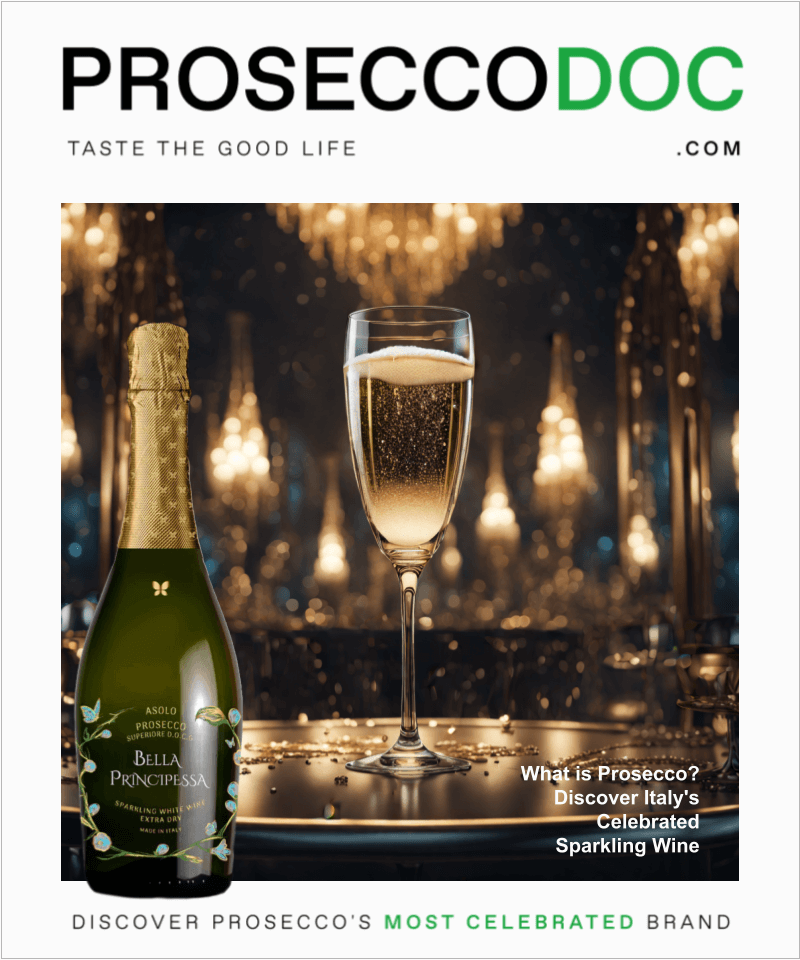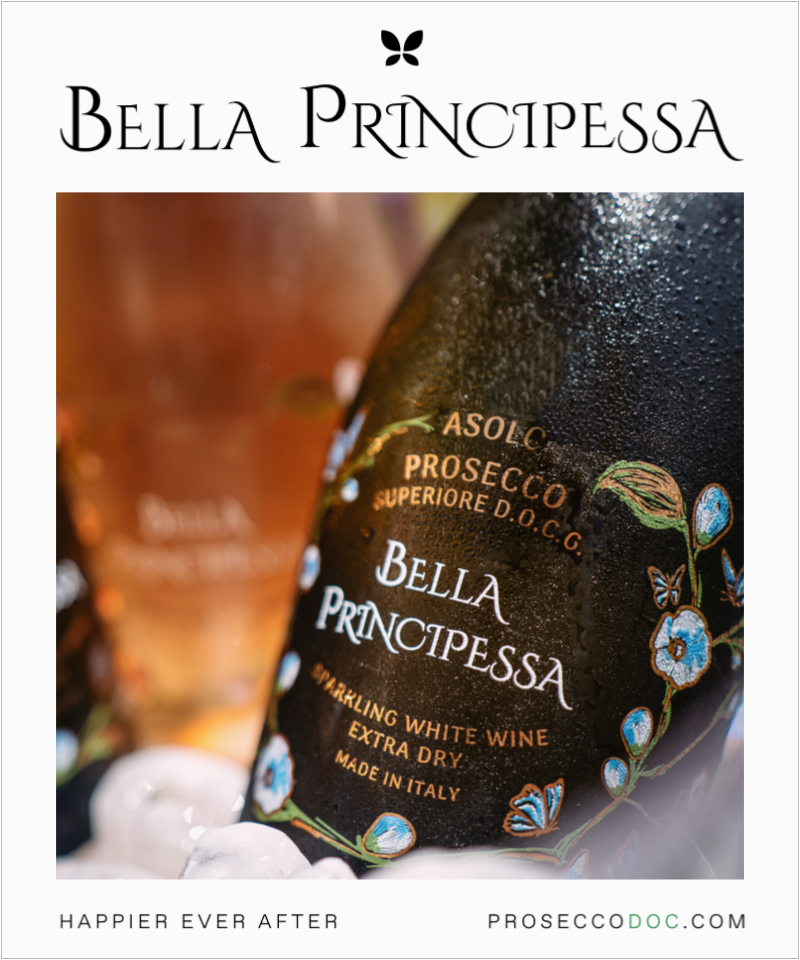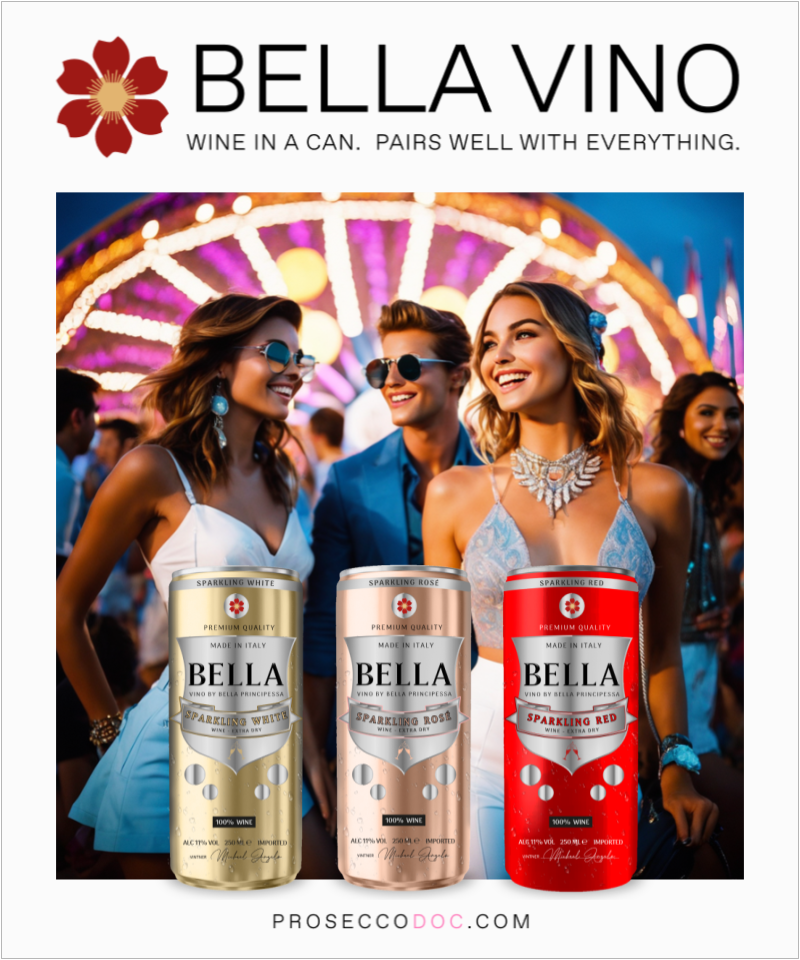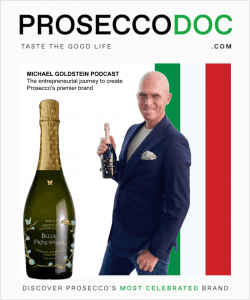So, what is Prosecco exactly? Wine enthusiasts and casual drinkers alike often ask this question.
Originating from Italy’s Veneto region, Prosecco is a delightful sparkling wine known for its crisp and fruity flavor. This guide will unravel the secrets behind Prosecco’s popularity, covering everything from its production to the ideal ways to enjoy it.
Short Overview: Understanding Prosecco
- Prosecco is an Italian sparkling white wine predominantly made from Glera grapes.
- Unlike Champagne, Prosecco is produced across nine provinces in the Veneto and Friuli Venezia Giulia regions.
- Known for its dry, light body, Prosecco is best enjoyed fresh, typically within a year of purchase.
Exploring the Roots: What Makes Prosecco Unique?
Prosecco has a rich history. It takes its name from a small village in Friuli, Italy. Unlike other Italian wines, which may include red and white varieties from different grapes, Prosecco is exclusively a sparkling wine made from Glera grapes.
The key to selecting a genuine Prosecco includes checking its Italian origin, looking for DOC or DOCG labels, and ensuring it contains at least 85% Glera grapes. Prosecco’s top-quality variants, particularly those from Valdobbiadene and Conegliano, are highly sought after by connoisseurs.
What is Prosecco Compared to Champagne?
A common inquiry is, “Is Prosecco Champagne?” While they are both sparkling wines, they differ significantly. Champagne has a more extended history and is made from a blend of Chardonnay, Pinot Noir, and Pinot Meunier grapes in France. Prosecco, governed by strict European laws, must originate from specific regions in Italy.
Prosecco’s quality is categorized into three levels: DOC, DOCG, and Superiore. DOCG represents the highest quality, particularly those from Conegliano Valdobbiadene Prosecco Superiore DOCG and Asolo Prosecco DOCG.
The Grape Behind Prosecco: Glera’s Role
Central to understanding Prosecco is the Glera grape. Prosecco must contain at least 85% Glera grapes, known for their thin skins and mild acidity, which contribute to its mellow flavor. Prosecco typically features an alcohol content between 8.5% and 12.5%, marked by a light and refreshing profile with notes of melon, peach, and pear.
Geography of Prosecco: Where is it Produced?
Prosecco hails from northeastern Italy, particularly across the Veneto and Friuli Venezia Giulia regions. The Prosecco DOC zone ensures strict quality standards and contributes to the distinctive taste that defines Prosecco.
Why Prosecco Superiore DOCG is Superior
In the “Prosecco” quality debate, understanding the distinction between Prosecco DOCG and DOC is vital. Prosecco DOCG, particularly from the steep hills of Valdobbiadene and Conegliano, is prized for its complex flavors, which are attributable to its unique soil and microclimates.
The Production Process
The primary method for producing Prosecco is the Charmat method, which involves carbonating the wine in large stainless steel tanks. This method ensures consistency and quality, distinguishing Prosecco from other sparkling wines.
Serving Tips: The Best Way to Enjoy
If you’re wondering, “What is Prosecco best served with?” the answer lies in its serving temperature and glassware. Prosecco should be chilled and served in a tulip-shaped glass to enhance its aromas and flavors. It is an excellent choice for cocktails and is best consumed soon after opening.
Pairing with Prosecco: Food Combinations
Prosecco’s versatility in pairings is part of what defines it. Whether it’s brut, extra dry, or dry Prosecco, each type has its ideal food pairing, ranging from salty snacks to sweet desserts.
Beyond the Bottle: Cans and Taps
Regarding Prosecco in cans or from taps, while not traditional, these forms still offer a pleasant Prosecco experience. Brands like Bella Vino provide quality sparkling wine in cans, capturing the essence of Prosecco in a convenient format without the Prosecco label.
Tasting Prosecco: Flavor Profile
The flavor of Prosecco is critical to understanding its character, as shown by its dry, light-bodied nature with hints of green apple, honeydew, pear, and cream. Prosecco offers a unique tasting experience that is different from champagne.
Prosecco’s Shelf Life
Prosecco is best enjoyed fresh, typically within a year of purchase, and should be consumed quickly once opened to maintain its flavor and effervescence.
Recommended Prosecco Brands
Bella Principessa and Signorina are among the top choices when exploring “What is Prosecco” in terms of brands. They are known for their quality and exquisite taste profiles. Cartizze, from the Valdobbiadene region, stands out for its superior quality.
In Conclusion: The Essence of Prosecco
To sum up, “What is Prosecco?” It is a sparkling white wine from Italy’s Veneto region, celebrated for its light, refreshing flavor and suitability for various occasions. Its distinct categories, Brut, Extra Dry, and Dry, offer a range of choices for every palate.
Frequently Asked Questions
- Prosecco vs. Champagne: Prosecco and Champagne are distinct, with Prosecco originating from Italy while Champagne comes from France, each reflecting their unique terroir.
- Sweetness: Prosecco is typically dry or extra-dry, yet its fruity notes lend it a naturally sweeter taste.
- The Special Appeal: Prosecco stands out for its elegant texture and delicate flavor, making it ideal for celebrations.
- Alcohol Content: Prosecco is a sparkling wine with an alcohol content of around 11% ABV, known for its fruity flavor and association with festive occasions.












